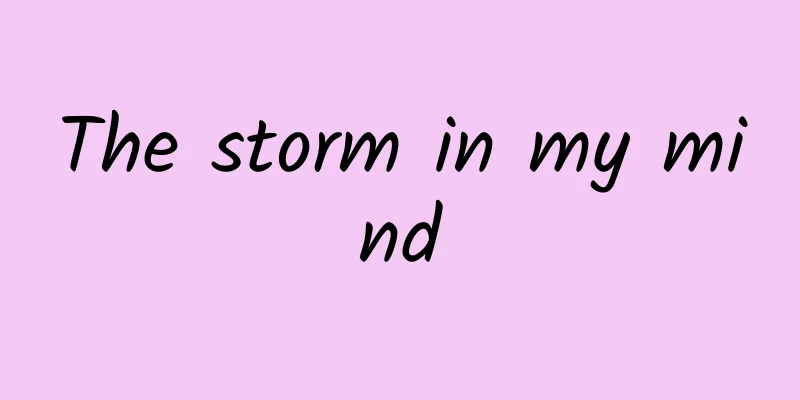The storm in my mind

|
An illustration from the 19th century: A "miracle doctor" is trying to cure a "mad" boy by applying lamp oil to him. The original English word "epilepsy" is said to come from the Greek word for "possessed" or "possessed by evil spirits", and the Chinese word "epilepsy" also generally implies this meaning. It was not until the mid-19th century that people realized that this pathological phenomenon might be related to electrical discharges. After the advent of the electroencephalogram in 1929, it was confirmed that epileptic seizures might be related to electricity. (Photo courtesy of Yi Jun) A young mother was bathing her 7-month-old baby at home when she suddenly had an epilepsy and fell to the ground, losing consciousness. When she "woke up", she found that the baby in the basin had drowned. Dr. Wang Mingyu's "Moving Brain" column "Epilepsy: A Mysterious "Electric Storm" in the Brain" (see page 7 of the September 1st "Popular Science Times") begins with a story about such a tragedy, and then explores the root cause of epilepsy - mainly the result of abnormal discharges of brain neurons, and briefly mentions cutting-edge technologies such as brain-computer interfaces that have been applied in medical practice. I paid special attention to this article because in the few days after its publication, I saw several reports from abroad on the use of brain-computer interface technology in rehabilitation treatment. In addition, in the book "When Zhang Zhongjing Met Stanford" written by Chinese-American physician Li Zongen, the introduction to the traditional Chinese medicine treatment for epilepsy was in sharp contrast to Western medicine treatment. According to Dr. Li Zongen, he has cured many epilepsy patients in clinic, many of whom were helpless to Western medicine, but were treated quickly and effectively by Chinese medicine. He cited a Chinese girl who suddenly had continuous twitching in both legs when she was 11 months old. Western medicine could not find any problems and could not treat her. Similar situations occurred many times in the following two or three years. When she was 4 and a half years old, she began to have involuntary movement disorders and epilepsy symptoms after catching a cold and having a fever, and even had difficulty speaking and could not control her hands and feet. Her parents quickly sent her to Lucile Packard Children's Hospital at Stanford University, the most authoritative pediatric hospital in California. After examination and consultation by doctors, it was determined that there was an irregular electrical reaction in the left brain, and the cause was unknown. Therefore, it was decided to give her drugs to suppress the discharge of cranial nerves. However, there was no improvement. At this time, the patient's parents heard Dr. Li discussing a case of epilepsy treatment on the radio. They thought what he said made sense, so they decided to try Chinese medicine treatment. Chinese medicine believes that the main cause of epilepsy is phlegm and fluid entering the blood vessels, meridians and brain. Usually, people with spleen deficiency are not easy to eliminate dampness and phlegm and fluid. Therefore, many clinical treatments for epilepsy focus on strengthening the spleen, promoting diuresis and removing phlegm. After Dr. Li saw this little patient, he prescribed a Chinese medicine decoction based on the spleen-strengthening "Xiao Jianzhong Decoction" and diuretic "Wuling Powder": cinnamon twig, white peony root, roasted licorice, red dates, ginger, white atractylodes, Poria, Polyporus, orientalis, and maltose. In addition, raw pinellia, tangerine peel and phlegm-removing fluid were added, and kudzu root was used as a medicine guide. After taking Chinese medicine for more than a month, the overall condition of the little patient improved significantly. In the following months, follow-up found that the patient was in good condition, did not take any Western medicine, and had no epileptic seizures. The authoritative hospital has not found the cause of the patient's illness. When the doctors learned that the patient was receiving Chinese medicine treatment, they were very disapproving. Even when they saw that the patient was getting better quickly and the epileptic symptoms disappeared, they still said to the patient's parents: "You don't even know what is in those branches and leaves, and you still give them to your child?" However, Dr. Li explained in the book: Those Western medicine doctors are still quite professional. They carefully examined the patient's condition and agreed that the patient no longer had epileptic symptoms and there was no abnormal discharge in the brain. They agreed that the patient stopped taking Western medicine and canceled the originally scheduled hospitalization observation plan. Regarding this case, Wang Mingyu commented that the theoretical system of traditional Chinese medicine is completely different from that of Western medicine. There are indeed many wonderful things about traditional Chinese medicine in regulating the whole body, but some methods (phenomena) cannot be explained by science at present. As far as he knows, there is no good way for Chinese medicine to treat epilepsy in China at present, and there are even some "magic prescriptions" of quack doctors, which is to add Western medicine to traditional Chinese medicine to improve the efficacy. The patients described in Li Zongen's book cannot be found in brain lesions by routine examinations, because the patients belong to the classification of refractory epilepsy (accounting for 30%). These patients need to receive further diagnosis and treatment, including long-term video EEG monitoring, positron emission computed tomography (Pet-CT), multimodal image fusion, stereotactic intracranial EEG, etc. With current technology, many of these once difficult and complicated diseases can be figured out and cured. In Wang Mingyu's opinion, epilepsy is caused by lesions in the brain, which lead to abnormal discharges of neurons. These "short-circuited" brain waves cause various symptoms in the human body, such as dazedness, involuntary movements, hallucinations, limb convulsions, etc., which occur suddenly and stop suddenly and recur repeatedly (especially with triggers such as fever). At present, there are three main treatments for epilepsy: drug therapy, diet therapy (ketogenic diet), and surgical treatment. Drug and dietary therapy, including traditional Chinese medicine, ultimately suppresses abnormal discharges of epileptogenic foci in the brain, while surgery removes the epileptogenic foci through physical methods or suppresses the epileptic network through neural regulation. Some foreign studies have shown that epilepsy often starts in a small area of the brain in a storm-like manner and then spreads outward. It is not clear why this happens, but a technique to repair brain problems, deep brain stimulation, which delivers a small amount of current to the brain, seems to help stop the storm before a full-blown epileptic seizure occurs. This can be seen as a more targeted form of electroconvulsive therapy. There is also a small device that monitors epileptic seizures in the brain, the responsive neurostimulator, which has also been introduced. It emits directional pulses when the electrical storm of epilepsy begins. Epilcure, independently developed by a research team from Zhejiang University, is the first implantable closed-loop responsive neurostimulator in China and the only electrical stimulation system in China that can act on the origin of epilepsy. This neuromodulation device based on brain-computer interface technology collects EEG signals through electrodes implanted at specific locations in the brain of epileptic patients, and transmits them to a microprocessor under the scalp for real-time analysis to predict the patient's epileptic seizure. When abnormal EEG is detected in the patient, the microprocessor will issue an early warning and release the corresponding stimulation program for electrical stimulation to inhibit excessive synchronized discharge of brain cells, thereby achieving the purpose of inhibiting epileptic seizures. (Author: Yin Chuanhong) |
<<: How to stay away from hand, foot and mouth disease during epidemic season
Recommend
What should I do if the abortion is not clean after the medication?
Women have always played a very important role in...
Bleeding at 15 weeks of pregnancy
Bleeding at 15 weeks of pregnancy may be a sign o...
What should pregnant women do if they have acute
Genital warts are a sexually transmitted disease ...
What to do if you have mild cervical inflammation
Cervical inflammation is particularly depressing ...
What to do if a pregnant woman has spotting in the early stages
The biggest wish of every woman during pregnancy ...
How long after a caesarean section can I have a second child
With the opening of the national two-child policy...
What to do if you have bleeding during sex after your period
Menstruation is a way for women to eliminate toxi...
Pregnancy after chocolate cyst surgery
After a woman develops a chocolate cyst, it is of...
Are uterine fibroids malignant?
Uterine fibroids are a type of tumor that relies ...
Polycystic ovary, belly is getting bigger
It makes sense that women with polycystic ovary s...
Is it better to do fluid perfusion or angiography?
Many female friends may encounter such a situatio...
What to do if the uterus prolapses
Uterine prolapse and detachment is a problem that...
What are the effects and functions of lemon mask
In addition to being edible, lemons are also good...
What are the diets for women during confinement?
The confinement period is a particularly importan...
I'm only one month pregnant, do you feel anything?
Pregnancy is a relatively long process. From the ...









